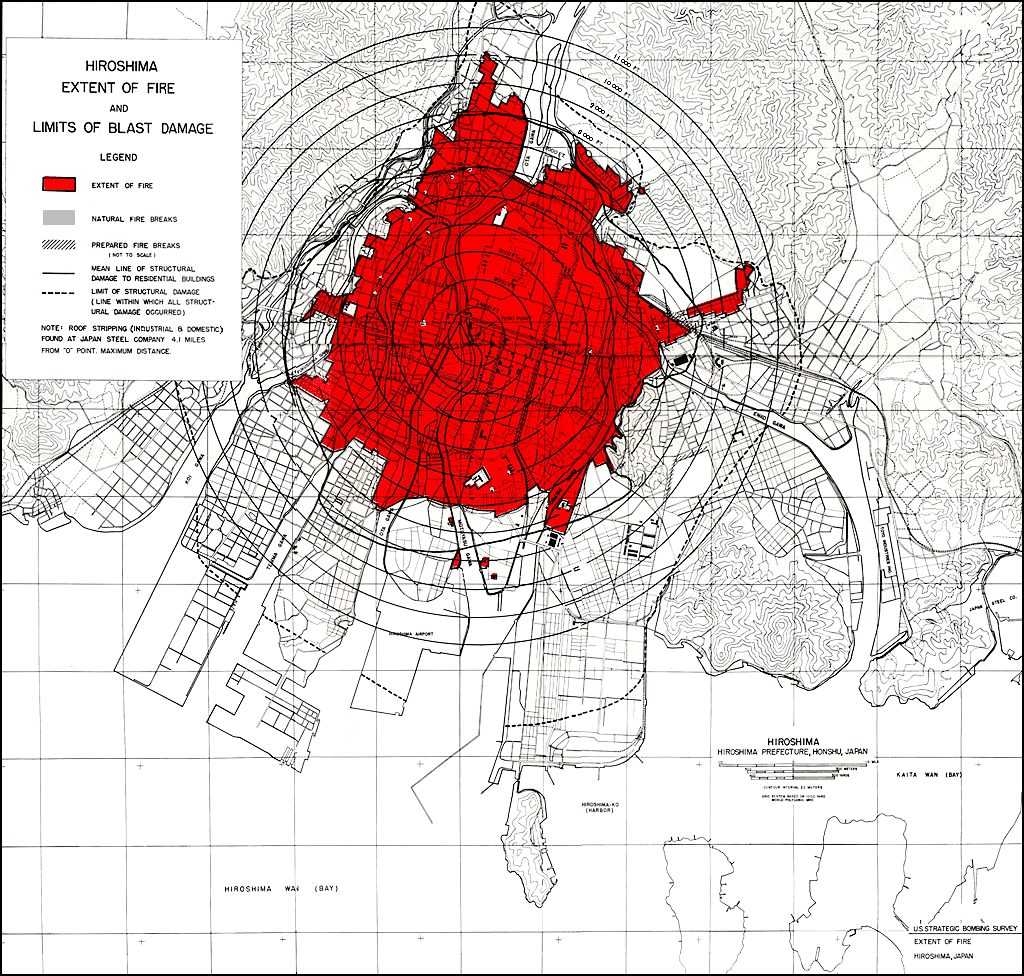
We are always terrified by a deadly force that we cannot see or in any way perceive until it strikes.
That was the kind of fear one of us (Lifton) encountered in survivors of the atomic bomb when he interviewed them in Hiroshima some decades ago—a fear of “invisible contamination.” Their fear was based on their witness or experience of grotesque early symptoms of radiation effects, a later increase in leukemia and other cancers, and the possibility of hereditary harm to subsequent generations.
With COVID-19 the dread involves a force that is everywhere and nowhere; the virus takes on an almost supernatural aura that in turn leads to bizarre conspiratorial explanations. It is very difficult to bring reason to a deadly force that is invisible.
Nuclear fear can be disseminated by the weapons themselves, by meltdowns in energy reactors, or by residual radiation effects in sites where the weapons were made or tested. Nuclear fear has become a model for large threats that endanger the human future. So when people encounter climate change, or now COVID-19, they find themselves associating back to nuclear images.
Indeed, such ultimate threats tend to merge in the mind as something on the order of world-ending apocalyptic dangers. When we (Lifton and Strozier) collaborated on a MacArthur Foundation study in the 1990s, entitled “Nuclear Fear in the American Self,” we found a close interweaving of climate and nuclear anxieties so that psychological associations between them could occur within the same thought, sentence, or phrase. COVID-19 has entered that apocalyptic realm and the fear of it has become amplified, along with anticipations of new and more extreme waves of this virus or other even more deadly viruses to come.
To be sure, COVID-19 differs from radiation effects in its signature characteristic of what can be called mobile contagion. It spreads quickly and wildly and is easily transmitted by human contact. Since the virus can be present in people without symptoms, it creates a paranoid structure in which each of us is endangered by contact with anyone else and each of us poses a similar threat to all others. Among Hiroshima survivors there was no such physical contagion. Yet others avoided them and discriminated against them, experiencing them both as death-tainted and psychologically contagious. With COVID-19, each of us, as a potential victim, becomes to some degree death-tainted.
An important difference between nuclear and COVID-19 fear is the disparity in scientific knowledge about them. A lot is known about nuclear weapons, how to make them and what they do, because they are direct products of our technology. What is also known is the widespread psychic numbing they cause, as well as the antithetical meanings given them— either as sources of ultimate destruction that are dangerous to possess, or as necessary contributions to national respect, to “deterrence,” and world peace.
In comparison, very little is known about COVID-19. There is still much ignorance about precisely what determines its spread and why it chooses certain areas and not others, about its differing symptoms and disease complexes, or its varying effects on age groups and people with particular prior conditions. Nor has COVID-19 been viewed as in any way beneficial, but there has been striking, politically-motivated negation of the virus and dismissal of its effects.
COVID-19 and nuclear fear both bring about universal death anxiety. With COVID-19 that has led also to various forms of profound dislocation. That dislocation may be geographic, as the more privileged among us flee from areas of high infection; it also extends to our way of living as we stay at home or socially distance ourselves, even from family and friends; to our work arrangements, which may collapse or be radically altered; and to excruciating decisions about teaching and learning and the function of schools. What we have lost is the relative safety of the pre-COVID-19 world. And we Americans are twice dislocated from national authority: from a president who has responded to the virus with extraordinary incompetence, cruelty, and corruption; and whose destructive approach to our institutions gravely endangers our political and psychological capacity to function as a democratic state.
With either threat, we have no choice but to call upon the remarkable capacity of the human species for adaptation. Such adaptation is by no means passive and must combine political will with scientific knowledge.
In the case of COVID-19, the American response so far has been egregiously inadequate. But that can change. American struggles for adaptation are increasingly informed, however painfully, by ubiquitous illness and enormous numbers of deaths. Holding to these physical truths about the virus we can break through the malignant normality the president seeks to impose—the brutal willingness to allow thousands, or hundreds of thousands of additional deaths in the service of economic recovery that would help him in the fall election. This policy meets with widespread public resistance. When people feel medically vulnerable and experience death anxiety, their strong psychological tendency is to turn to doctors for accurate information and appropriate policies, or to political leaders who hold to medical truths, however daunting.
Neither the virus nor nuclear threat are likely to soon disappear. But we as a species are capable of bringing to them the mind’s capacity to embrace policies that hold back catastrophe and contribute to the continuity of human life.



